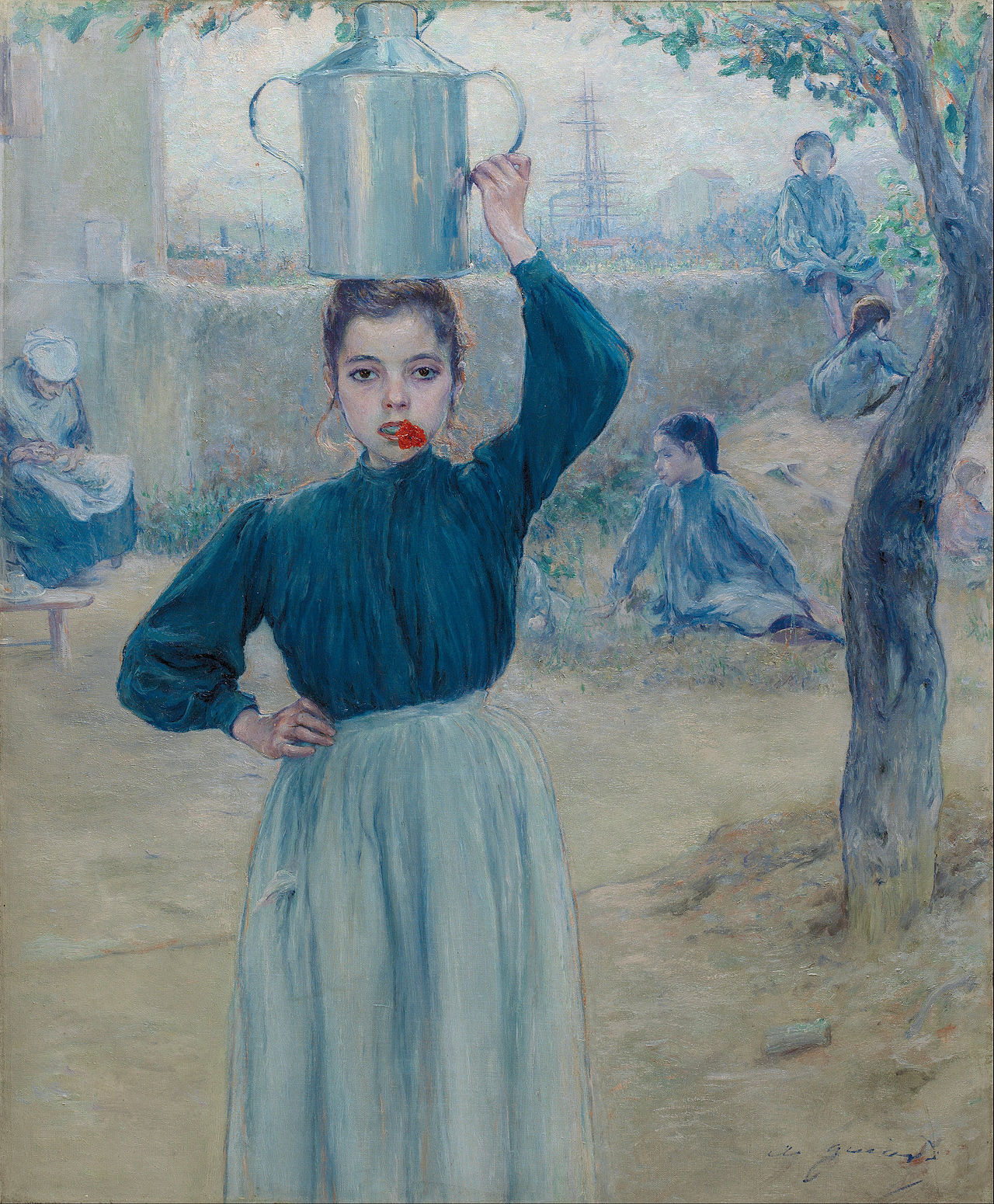
Adolfo Guiard’s “Village Girl with Red Carnation” is a remarkable piece of art that captures the essence of Basque culture and the beauty of its people through the lens of the late 19th and early 20th centuries. Born in Bilbao in 1860, Guiard was a Spanish painter who is often celebrated for his contribution to Basque art, providing a bridge between the traditional and the modern. This article delves into the intricacies of this painting, exploring its historical context, artistic significance, and the legacy of Adolfo Guiard.
Historical Context
The late 19th century was a period of significant change in Spain, marked by political unrest, the loss of its colonies, and a burgeoning interest in regional identities. Amidst this backdrop, Adolfo Guiard emerged as a proponent of Basque culture, using his art to express the unique identity of the Basque people. Village Girl with Red Carnation” is set against this backdrop of cultural renaissance and is reflective of Guiard’s deep connection with his Basque roots.
Description of the Painting
“Village Girl with Red Carnation” portrays a young Basque girl, possibly from a rural area, given the simplicity and traditional nature of her attire. She is depicted holding a red carnation, a symbol that can be interpreted in various ways, including love, fascination, and distinction. The girl’s attire is traditional, possibly indicative of the Basque region, which adds a layer of cultural identity to the piece. Guiard’s use of color, light, and shadow in the painting brings the girl’s features to life, highlighting her innocence and the purity of her gaze.
Artistic Significance
Adolfo Guiard’s technique and style in “Village Girl with Red Carnation” show a blend of realism and impressionism. His brushwork is meticulous, capturing the texture of the girl’s clothing and the softness of her hair with precision. The use of light in the painting is particularly notable, as Guiard masterfully creates a luminous effect on the girl’s face, making her the focal point of the composition. The red carnation stands out against her modest attire, drawing the viewer’s eye and emphasizing the painting’s emotional depth.
Guiard’s work is significant for its contribution to Basque art at a time when regional culture was undergoing a revival. By focusing on a subject that was deeply rooted in Basque identity, Guiard not only showcased his technical prowess but also his cultural pride. This painting, among others, helped to elevate Basque art on the national stage, showcasing the region’s unique heritage and traditions.
Legacy of Adolfo Guiard
Adolfo Guiard’s legacy is firmly entrenched in his dedication to Basque culture and his ability to capture the essence of his subjects with sensitivity and depth. “Village Girl with Red Carnation” is a testament to his talent and his commitment to portraying the Basque people with dignity and respect. Through his work, Guiard has left an indelible mark on Spanish art, inspiring future generations of artists to explore their cultural heritage with pride and authenticity.
Despite the limited information on Guiard’s “Village Girl with Red Carnation,” its significance lies in its embodiment of Basque culture and identity. Through this painting, Guiard contributes to the narrative of Basque art, emphasizing the importance of regional identity in the broader context of Spanish history. His work remains a valuable asset to the art world, offering insight into the cultural and historical nuances of the Basque people.
In conclusion, Adolfo Guiard’s “Village Girl with Red Carnation” is more than just a portrait of a young girl; it is a celebration of Basque culture, a showcase of Guiard’s artistic mastery, and a piece that speaks to the enduring power of regional identity. As we continue to explore and appreciate the rich tapestry of Spanish art, Guiard’s contribution, epitomized by this captivating painting, will undoubtedly continue to inspire and resonate with art lovers and cultural historians alike.




